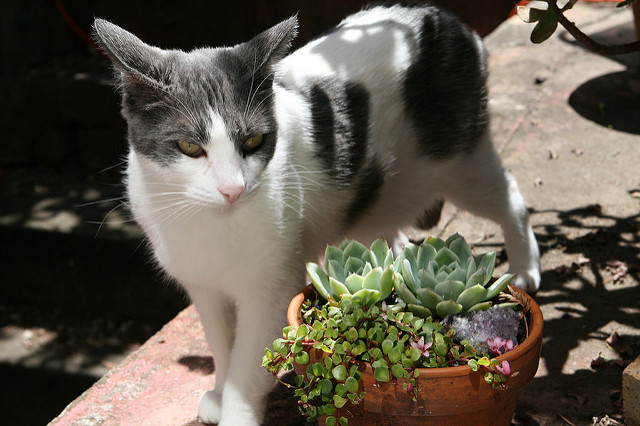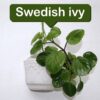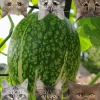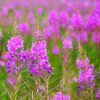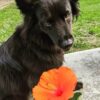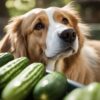Key Takeaways
Blue Echeveria plants are non-toxic to both cats and dogs.
Ingesting Blue Echeveria can cause mild stomach upset in pets.
Blue Echeveria thrives in bright, indirect sunlight.
Water Blue Echeveria sparingly, allowing the soil to dry out between waterings.
Blue Echeveria can grow up to 12 inches in diameter and 8 inches tall.
Are Blue Echeveria Plants Toxic to Cats and Dogs?
If you’re a pet-loving gardener, you might worry about whether your plants are safe for your furry friends. When it comes to Blue Echeveria, you can breathe a sigh of relief. These beautiful succulents are non-toxic to both cats and dogs. That means your pets can safely coexist with these plants without any serious health risks.
“Popular Succulents May Be Toxic To Your …” from face4pets.wordpress.com and used with no modifications.
Understanding the Toxicity Levels
Many plants are toxic to pets, causing anything from mild discomfort to severe health issues. However, Blue Echeveria isn’t one of them. According to the ASPCA, Blue Echeveria is not listed as a toxic plant for cats or dogs. This makes it a fantastic choice for a pet-friendly garden.
But just because it’s non-toxic doesn’t mean it can’t cause some mild issues if ingested. Pets who nibble on Blue Echeveria might experience minor stomach upset.
Symptoms of Ingestion in Pets
Even though Blue Echeveria is non-toxic, it’s still important to know what to look for if your pet decides to take a bite. Here are some common symptoms:
Vomiting
Diarrhea
Mild gastrointestinal discomfort
“While Blue Echeveria isn’t toxic, ingestion can still cause discomfort. Monitor your pet for vomiting or diarrhea and consult your vet if symptoms persist.”
Immediate Actions if Ingested
If your pet eats part of a Blue Echeveria plant, don’t panic. Here’s what you should do:
For other pet-safe options, consider adding Sweet Alyssum to your garden.
Remove any remaining plant material from your pet’s mouth.
Rinse their mouth with water to remove any residue.
Monitor them for symptoms like vomiting or diarrhea.
Contact your veterinarian if symptoms persist or worsen.
How to Care for Blue Echeveria in Your Pet Safe Garden
Now that we know Blue Echeveria is safe for pets, let’s talk about how to care for these stunning succulents. Proper care will ensure they thrive and add beauty to your garden. For more detailed care instructions, you can refer to this guide on Blue Echeveria care.
Choosing the Right Location
Blue Echeveria plants need a spot where they can get plenty of light but not too much direct sunlight. They thrive in bright, indirect light. Therefore, a windowsill with filtered sunlight or a shaded patio is ideal.
If you’re growing them indoors, place them near a window that gets plenty of light but isn’t exposed to the harsh afternoon sun. Outdoors, choose a spot that gets morning sunlight and afternoon shade. For more details on how to care for these plants, check out this guide on Sedeveria Blue Elf care.
Best Soil Types and Potting
Blue Echeveria prefers well-draining soil. You can use a commercial succulent or cactus mix, which is designed to drain quickly and prevent root rot. If you’re making your own mix, combine regular potting soil with sand or perlite.
Maintaining Proper Moisture Levels
Watering is crucial for Blue Echeveria. Overwatering can lead to root rot, so it’s important to let the soil dry out completely between waterings. Here’s a simple watering guide:
Water sparingly, about once every two weeks.
Ensure the soil is completely dry before watering again.
Reduce watering frequency during the winter months.
Remember, it’s better to underwater than overwater. Blue Echeveria stores water in its leaves, making it drought-tolerant.
Annual Maintenance and Pruning Tips
To keep your Blue Echeveria looking its best, you’ll need to do some light maintenance. This includes removing dead leaves and pruning any leggy growth. Here’s how:
Remove dead or dying leaves from the base of the plant.
Trim leggy stems to encourage new, compact growth.
Repot the plant every two years to refresh the soil and provide more space for growth.
By following these simple steps, your Blue Echeveria will thrive and remain a beautiful, pet-safe addition to your garden.
Blue Echeveria plants are not just beautiful; they are also relatively easy to care for. Let’s dive deeper into some common concerns gardeners have about these plants.
Why is My Blue Echeveria Growing Tall?
One of the most common questions I get from fellow gardeners is why their Blue Echeveria is growing tall and leggy. This usually happens when the plant isn’t getting enough light, causing it to stretch out in search of more.
Understanding Etiolation in Succulents
Etiolation is a process where plants grow abnormally long stems due to insufficient light. When a Blue Echeveria doesn’t get enough light, it will stretch towards the nearest light source. This not only makes the plant look less attractive but also weakens its overall structure.
For example, if your Blue Echeveria is sitting in a dimly lit room, you might notice it growing taller and thinner. This is a clear sign that it needs more light. For more tips on pet-safe plants, check out Angelonia, which is not toxic to dogs and cats.
Steps to Prevent Tall, Leggy Growth
To prevent your Blue Echeveria from becoming leggy, follow these steps:
Ensure it gets at least 6 hours of bright, indirect sunlight daily.
Rotate the plant regularly to ensure even light distribution.
Consider using a grow light if natural light is insufficient.
By providing the right amount of light, you can keep your Blue Echeveria compact and healthy. For more tips on pet-safe plants, check out our guide on Sweet Alyssum.
Revitalizing an Overgrown Echeveria
If your Blue Echeveria has already grown tall and leggy, don’t worry. You can still revitalize it:
Trim the elongated stems, leaving a few inches at the base.
Allow the cuttings to callous over for a few days.
Replant the cuttings in well-draining soil and place them in bright, indirect light.
With proper care, the cuttings will root and grow into healthy new plants.
How Big Do Blue Echeveria Plants Get?
Blue Echeveria plants can vary in size, but they generally remain compact, making them perfect for small spaces.
Expected Growth Dimensions
On average, a healthy Blue Echeveria can grow up to 12 inches in diameter and about 8 inches tall. However, the size can vary based on the growing conditions and care provided.
Factors Influencing Plant Size
Several factors can influence the size of your Blue Echeveria:
Light: Adequate sunlight is crucial for healthy growth.
Water: Proper watering ensures the plant doesn’t suffer from root rot or dehydration.
Soil: Well-draining soil promotes healthy root development.
“Blue Echeveria plants thrive in well-draining soil and bright, indirect sunlight. With proper care, they can grow up to 12 inches in diameter and 8 inches tall.”
Managing Growth Through Pruning and Care
To manage the growth of your Blue Echeveria, regular pruning is essential. Remove any dead or damaged leaves and trim leggy stems to encourage new growth. Additionally, repotting the plant every two years can help manage its size and keep the soil fresh. For more tips on maintaining a pet-safe garden, check out our guide on pet-safe plants like Angelonia.
Preventing Pet Exposure to Blue Echeveria
Even though Blue Echeveria is non-toxic to pets, it’s still a good idea to prevent them from nibbling on the plant. This will keep your plant looking its best and avoid any minor stomach upsets in your pets.
Strategic Plant Placement
Place the plant on high shelves or in hanging planters out of your pet’s reach.
Use plant stands that are difficult for pets to climb.
Consider placing the plant in rooms that are off-limits to pets.
By strategically placing your Blue Echeveria, you can ensure both your plant and pets stay safe. For more information on pet-safe succulents, check out this article on succulents for cats and dogs.
Strategic Plant Placement
Even though Blue Echeveria is non-toxic to pets, it’s still a good idea to prevent them from nibbling on the plant. This will keep your plant looking its best and avoid any minor stomach upsets in your pets. To keep your Blue Echeveria out of reach, place the plant on high shelves or in hanging planters. These elevated positions make it difficult for pets to access them. Another option is to use plant stands that are challenging for pets to climb. Additionally, consider placing the plant in rooms that are off-limits to pets. By strategically placing your Blue Echeveria, you can ensure both your plant and pets stay safe.
Use of Pet Barriers and Alternative Deterrents
If you can’t place your Blue Echeveria out of reach, consider using pet barriers. Baby gates can effectively keep pets away from specific areas where your plants are located. Another alternative is to use natural deterrents. Spraying a pet-safe bitter solution around the plant can discourage pets from getting too close. You can also try placing citrus peels or coffee grounds around the base of the plant, as many pets dislike these scents.
Besides that, offering your pets their own safe plants to chew on can redirect their attention away from your Blue Echeveria. Cat grass and pet-friendly herbs like basil or parsley can be excellent distractions.
Pet-Friendly Alternatives to Blue Echeveria
While Blue Echeveria is safe for pets, you might want to diversify your garden with other pet-friendly plants. Choosing plants that are both beautiful and non-toxic can create a harmonious environment for both you and your pets.
Here are some alternatives to consider:
Hens and Chicks (Sempervivum tectorum)
Zebra Haworthia (Haworthiopsis attenuata)
Ponytail Palm (Beaucarnea recurvata)
These plants not only add variety to your garden but also ensure that your pets remain safe.
List of Safe Succulents for Pets
In addition to the alternatives mentioned, here is a list of safe succulents that you can confidently add to your garden. For example, sweet alyssum is a great pet-friendly choice.
Burro’s Tail (Sedum morganianum)
Christmas Cactus (Schlumbergera)
Opuntia (Prickly Pear Cactus)
Spider Plant (Chlorophytum comosum)
Each of these succulents is non-toxic to pets and can thrive alongside your Blue Echeveria.
“Choosing pet-safe plants ensures that your garden remains a safe and enjoyable space for your furry friends.”
Benefits of Choosing Pet-Safe Plants
Opting for pet-safe plants offers numerous benefits. Firstly, it provides peace of mind, knowing that your pets won’t suffer from accidental ingestion. Secondly, it allows you to create a lush, diverse garden without compromising your pets’ safety. Finally, pet-safe plants can often withstand a bit of roughhousing, making them durable choices for households with active pets.
By choosing pet-safe plants, you can cultivate a beautiful garden that both you and your pets can enjoy.
Frequently Asked Questions
How often should I water my Blue Echeveria?
Blue Echeveria should be watered sparingly. Allow the soil to dry out completely between waterings. Typically, watering once every two weeks is sufficient, but you may need to adjust this based on your specific environment and climate.
Can Blue Echeveria be grown from seeds?
Yes, Blue Echeveria can be grown from seeds, although it is more commonly propagated through leaf cuttings or offsets. Growing from seeds requires patience, as it can take several months for seedlings to develop into mature plants.
What are the signs of a healthy Blue Echeveria?
A healthy Blue Echeveria will have firm, plump leaves that are a vibrant blue-green color. The plant should be compact and symmetrical, with no signs of yellowing or wilting. Additionally, the leaves should not be mushy or discolored, as these can be signs of overwatering or disease. For more tips on maintaining a pet-safe garden, check out these favorite plants for a rabbit garden.
Do Blue Echeveria plants need fertilizer?
While Blue Echeveria doesn’t require frequent fertilization, you can feed it with a balanced, water-soluble fertilizer diluted to half strength during the growing season (spring and summer). Fertilize once a month to provide essential nutrients and promote healthy growth. For more information on pet-safe plants, check out our guide on Angelonia care for pets.
How do I propagate Blue Echeveria?
Propagating Blue Echeveria is relatively easy. Here’s how:
Choose a healthy leaf from the parent plant and gently twist it off.
Allow the leaf to callous over for a few days.
Place the calloused leaf on well-draining soil without burying it.
Mist the soil lightly until roots and new rosettes form.
With proper care, the new plants will thrive and grow into beautiful Blue Echeveria.
In conclusion, Blue Echeveria plants are a wonderful addition to any pet-safe garden. They are non-toxic to cats and dogs, easy to care for, and can add a touch of beauty to your space. By following the care tips and preventive measures outlined in this guide, you can ensure that both your plants and pets coexist harmoniously.
